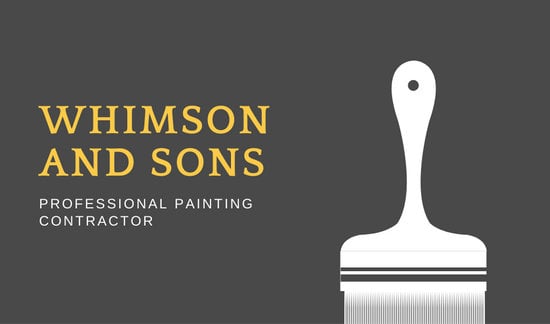Secret Seasonal Considerations For Commercial Outside Painting: What You Need To Be Enlightened About
Secret Seasonal Considerations For Commercial Outside Painting: What You Need To Be Enlightened About
Blog Article
Web Content Writer-Doherty Rosendal
When you're planning a business outside paint job, seasonal elements can make or damage your results. You'll wish to think about exactly how temperature level and moisture impact paint application and drying out times. Choosing the ideal period can ensure your paint sticks properly and lasts longer. However which seasons are really the most effective for this sort of job? Allow's explore the key elements that can influence your job's success.
The Influence of Temperature on Paint Application
When you're intending a commercial external painting job, the temperature can substantially influence how well the paint adheres and dries.
Preferably, you intend to paint when temperature levels vary between 50 ° F and 85 ° F. If it's as well cold, the paint might not treat effectively, leading to problems like peeling off or cracking.
On the other hand, if it's also warm, the paint can dry too quickly, avoiding appropriate bond and resulting in an uneven coating.
You should also take into consideration the time of day; morning or late afternoon provides cooler temperature levels, which can be a lot more favorable.
Constantly inspect the manufacturer's suggestions for the particular paint you're making use of, as they often give assistance on the suitable temperature variety for ideal results.
Moisture and Its Result on Drying Times
Temperature isn't the only ecological factor that influences your industrial exterior paint task; moisture plays a substantial role also. High humidity degrees can slow down drying times drastically, influencing the overall top quality of your paint work.
When the air is saturated with moisture, the paint takes longer to treat, which can bring about issues like inadequate attachment and a higher threat of mold development. If https://dengarden.com/news/black-home-gym-paint on an especially damp day, be prepared for extensive wait times in between layers.
https://interior-house-painters-n99876.theideasblog.com/35550556/the-development-of-the-painting-market-trick-trends-and-technologies-ahead to check local weather and strategy as necessary. Ideally, go for moisture degrees between 40% and 70% for optimum drying.
Keeping these factors in mind ensures your task stays on track and supplies a long-term surface.
Best Seasons for Commercial Exterior Painting Projects
What's the very best time of year for your industrial external paint projects?
Spring and very early autumn are commonly your best choices. Throughout these periods, temperatures are moderate, and moisture levels are typically reduced, creating ideal problems for paint application and drying out.
Stay clear of summertime's intense heat, which can create paint to dry as well promptly, causing bad adhesion and surface. In a similar way, winter's cool temperature levels can prevent correct drying and treating, risking the durability of your paint job.
Go for days with temperature levels in between 50 ° F and 85 ° F for optimum outcomes. Bear in mind to examine the regional weather prediction for rainfall, as damp problems can destroy your project.
Preparation around these variables ensures your paint job runs efficiently and lasts much longer.
Conclusion
To conclude, planning your business exterior paint jobs around seasonal considerations can make a significant difference in the result. By organizing wallpapering tulsa during the ideal temperatures and moisture degrees, you'll ensure far better attachment and drying out times. Remember to watch on neighborhood weather report and select the right time of year-- spring and early loss are your best bets. Taking these steps will aid you attain a durable and expert finish that lasts.
